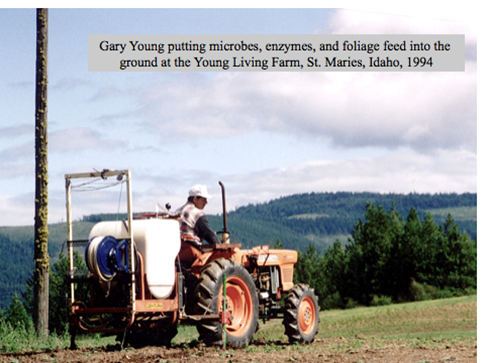Preparing the Soil for Healthy Plants
 Step No. 3: Preparation. You must understand geographical location, soil type, climate, elevation, humidity, and temperature—and our plants are planted using an additional frequency called love!
Step No. 3: Preparation. You must understand geographical location, soil type, climate, elevation, humidity, and temperature—and our plants are planted using an additional frequency called love!
Growing healthy plants starts with understanding the soil, the chemistry, and the nutritional needs of the plants. I spent six years in the original start-up phase, and I’ll show you what we’re doing today. We have a huge research center at the farm in Ecuador. Why? Because we can work there 12 months out of the year.
This is in 1994 when I was building the soil, and there I’m on my tractor injecting microbes and enzymes into the soil to bring the pH up to start reestablishing it. Yes, this is to grow aromatic plants. To produce good oil is not just a matter of going out and getting it from a broker. Then you’re likely to just get perfume.
All aromatic plants prefer well-drained soil. Heavy clay soils need to be composted; they need to be built up with humus, enzymes, and microbes to break down the composition. Aromatic plants need nitrogen, phosphorus, potash, and a pH range from 7 to 7.8 to produce good oil. Compost increases nitrogen. Banana peels and coconut husks are fabulous and are what we use in Ecuador for nitrogen. Here we use clover and alfalfa to increase nitrogen. We also use worm castings to increase nitrogen and to balance the phosph orus to build up humus in the soil.

